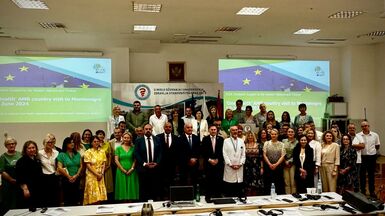Antimicrobial resistance on the rise in the European Union, ECDC and EFSA warn
Bacteria in humans, food and animals continue to show resistance to the most widely used antimicrobials, says the latest report on antimicrobial resistance in zoonotic bacteria in Europe. Resistance to ciprofloxacin, an antimicrobial that is critically important for the treatment of human infections, continues to be very high in Campylobacter, thus reducing the options for effective treatment of severe foodborne infections. In addition, multi-drug resistant Salmonella bacteria continue to spread across Europe.
The report also found evidence of resistance to the antimicrobial colistin in Salmonella and E. coli among poultry in the EU. “This is worrying because it means that this last-resort drug may soon no longer be effective for treating severe human infections with Salmonella” said Mike Catchpole, Chief Scientist for ECDC.
Besides the high levels of resistance shown throughout Europe, there are significant regional differences. The highest levels of antimicrobial resistance are observed in eastern and southern Europe. “In northern Europe, there is lower resistance in bacteria from poultry, particularly in countries with low use of antimicrobials in animals,” said Marta Hugas, Head of EFSA’s Biological Hazards and Contaminants unit.
Turning the tide on antimicrobial resistance is at the top of ECDC’s agenda. In 2015, the eighth European Antibiotic Awareness Day was launched, with more than 40 countries participating. This European health initiative coordinated by ECDC aims to support Member States in their efforts to promote prudent use of antimicrobials.







